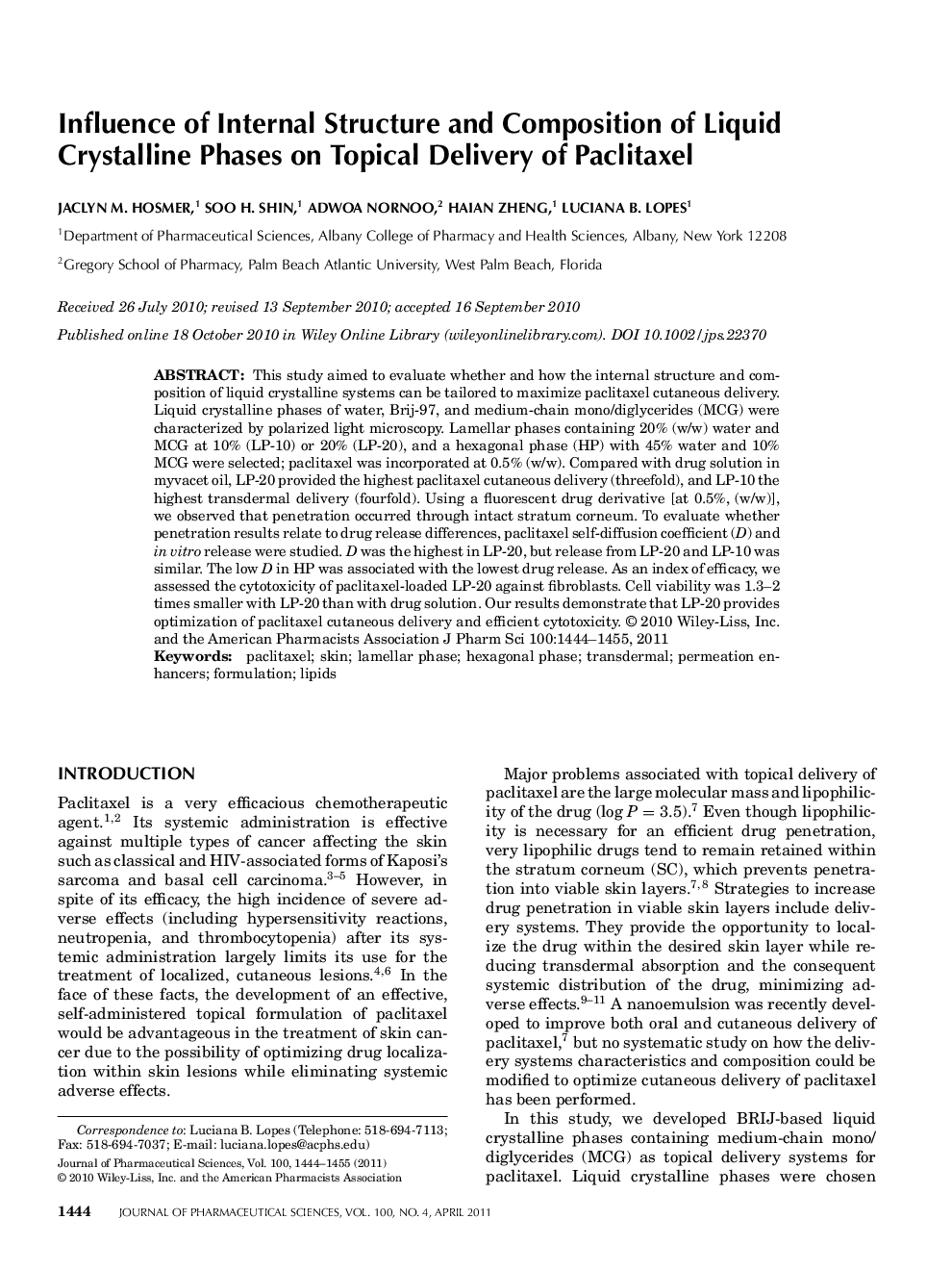| Article ID | Journal | Published Year | Pages | File Type |
|---|---|---|---|---|
| 2486674 | Journal of Pharmaceutical Sciences | 2011 | 12 Pages |
Abstract
This study aimed to evaluate whether and how the internal structure and composition of liquid crystalline systems can be tailored to maximize paclitaxel cutaneous delivery. Liquid crystalline phases of water, Brij-97, and medium-chain mono/diglycerides (MCG) were characterized by polarized light microscopy. Lamellar phases containing 20% (w/w) water and MCG at 10% (LP-10) or 20% (LP-20), and a hexagonal phase (HP) with 45% water and 10% MCG were selected; paclitaxel was incorporated at 0.5% (w/w). Compared with drug solution in myvacet oil, LP-20 provided the highest paclitaxel cutaneous delivery (threefold), and LP-10 the highest transdermal delivery (fourfold). Using a fluorescent drug derivative [at 0.5%, (w/w)], we observed that penetration occurred through intact stratum corneum. To evaluate whether penetration results relate to drug release differences, paclitaxel self-diffusion coefficient (D) and in vitro release were studied. D was the highest in LP-20, but release from LP-20 and LP-10 was similar. The low D in HP was associated with the lowest drug release. As an index of efficacy, we assessed the cytotoxicity of paclitaxel-loaded LP-20 against fibroblasts. Cell viability was 1.3-2 times smaller with LP-20 than with drug solution. Our results demonstrate that LP-20 provides optimization of paclitaxel cutaneous delivery and efficient cytotoxicity.
Keywords
Related Topics
Health Sciences
Pharmacology, Toxicology and Pharmaceutical Science
Drug Discovery
Authors
Jaclyn M. Hosmer, Soo H. Shin, Adwoa Nornoo, Haian Zheng, Luciana B. Lopes,
